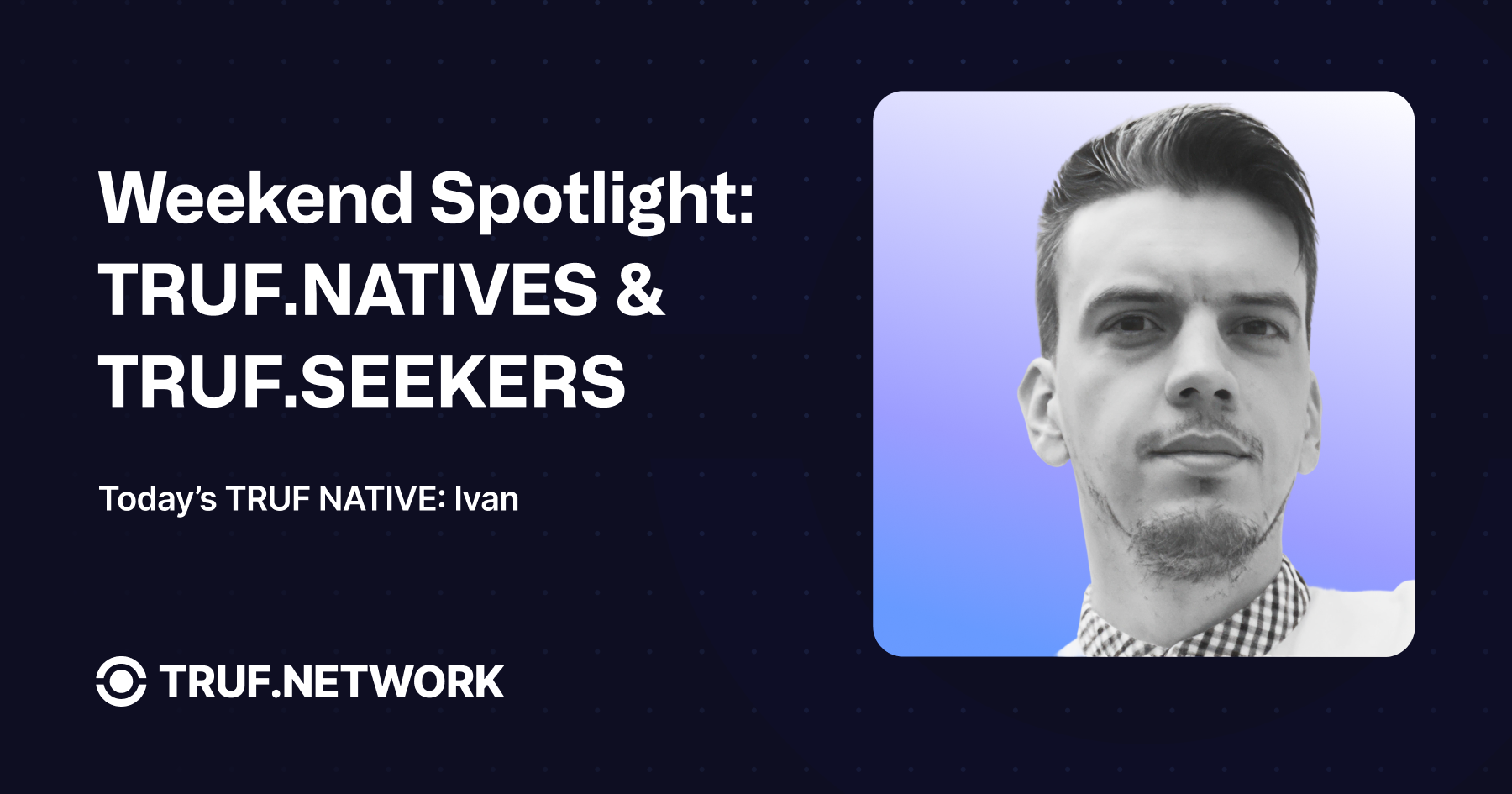Weekend Spotlight: TRUF.NATIVES & TRUF.SEEKERS
Every weekend, we’re pulling back the curtain on the people who make TRUF.NETWORK possible. Today’s TRUF NATIVE: Ivan.
Day 20 of 100 days of TRUF
Every weekend, we’re pulling back the curtain on the people who make TRUF.NETWORK possible — not just what they do, but why they’re here.
Each interview introduces two sides of the same person:
- As a TRUF.NATIVE, they’re part of the team building trust into the fabric of the internet — engineers, designers, operators, and strategists working together to rethink how truth flows online.
- As a TRUF.SEEKER, they represent the mindset shared by many of our clients and community: people who are done relying on outdated, manipulated, or unverifiable data. They’ve chosen a path toward transparency, resilience, and truth — whether in how they invest, build, or simply navigate the digital world.
This series is about the humans behind the mission — and the mission that resonates far beyond just us.
Ivan
As a TRUF.NATIVE
-
What’s your job?
I'm the AI & Data Lead at Truflation, where I focus on developing data models, exploring new tooling, and pushing the boundaries of what’s possible with real-time economic insights. -
What’s your favourite part of the job or project that you are working on?
I’ve always loved numbers and working with data, but what really drives me is being on the edge of technological innovation. I enjoy diving into new tools—especially in AI—and figuring out how to make them work in service of building something meaningful. Truflation is one of those rare projects where everything aligns: we're building something that not only works, but actually has the potential to change how the world understands inflation and economic truth. -
How long have you been working with the team?
I’ve been with Truflation since day one. I was part of the core group that helped design the original US inflation index, so I’ve seen it all—from rough sketches to where we are today. -
Why did you join?
The vision from the leadership team was impossible to ignore. Their energy, clarity of purpose, and belief in challenging the status quo really drew me in. I’ve always believed that the way economic data is produced is flawed—too slow, too political, too opaque—so the idea of helping fix that felt not just exciting, but necessary. -
If you were creating an index on index.fun to trade on, what would you build?
I'd love to build a more nuanced index that tracks the health and momentum of the entire crypto market—something beyond price. Think stablecoin supply shifts, active wallet growth, gas usage trends, and velocity of money within DeFi. Yes, there are already market indexes out there, but I think there’s room for a more insightful, behavior-driven metric that reflects where the space is really moving.
As a TRUF.SEEKER
-
How long have you been in crypto?
Since 2015. It started with a few small investments, but quickly evolved into a long-term commitment to the space. -
Do you invest in crypto?
Absolutely. That’s actually how I got into the industry in the first place—by investing. It gave me a front-row seat to everything that was happening and sparked the curiosity that eventually turned into a full-time career. -
What’s your favourite token (other than the $TRUF token obviously!)
Haha, I wouldn’t trust my past trading choices too much, but these days I keep things pretty simple. I’ve become quite conservative and mainly hold BTC and ETH. They’re the backbone of the space, and that stability appeals to me now more than ever. -
What’s your hot take on the future of crypto in 1 sentence?
Sometimes it feels like progress is slow, but when I step back and compare today to 2015, it’s clear we’re living in what we once thought was a distant dream. -
What’s one Web2 thing you’d never bring into Web3?
Three-day settlement in a digital world. It's 2025, and banks still need T+2 (or more) to move money. Web3 settles in seconds—because that's how the internet should work. -
What do you think is the biggest thing that would help the adoption of crypto?
Seamless user experience. If we can build interfaces that feel like everyday apps and abstract away the technical complexity of crypto, we’ll finally unlock mass adoption.
Stay tuned, more to come!

